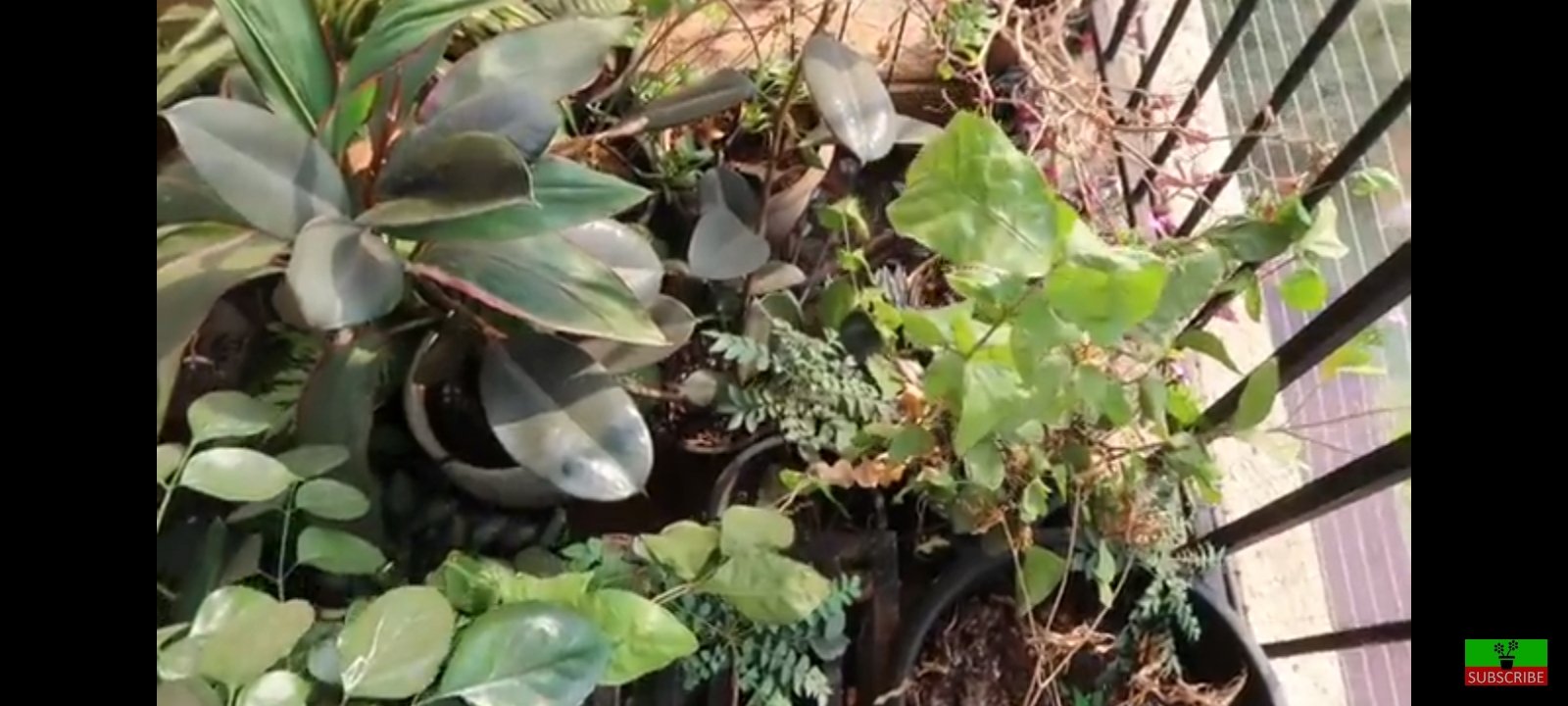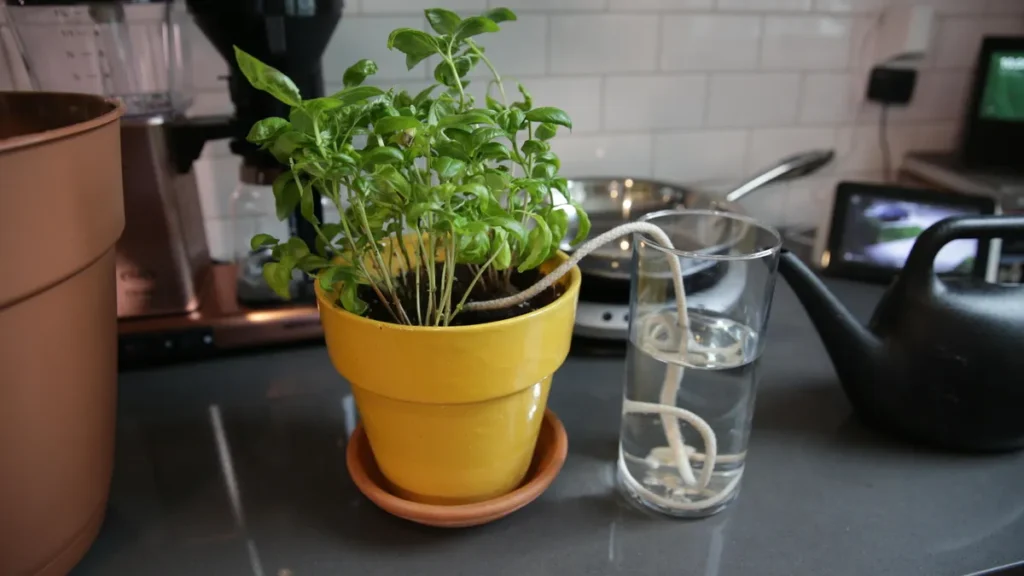Watering Plants in a Vacation to maintain plant hydration is crucial. So, it is a must for you to think of a way to keep your plants hydrated.
Strategies to Water Plants in a Vacation
To address water plants in a Vacation, you need to consider a few strategies.
- Group plants with similar water needs for easier care.
- You need to prioritize thorough watering before leaving.
- Self-watering devices or DIY solutions, like water-filled bottles with pinpricked lids can provide a slow-release water source.
- Place plants in a shaded area to reduce water evaporation.
- If feasible, enlist a friend or neighbor to water periodically.
- For longer trips, explore indoor plants that require minimal watering.
Because, Planning ahead ensures your green companions stay nourished, minimizing the risk of dehydration while you enjoy your vacation.
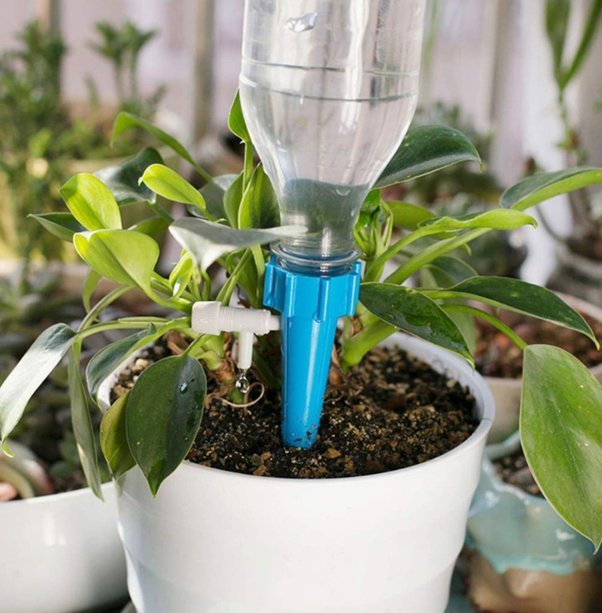
Easy Ways to Water Plants in a Vacation
These are easy ways to water plants in a Vacation:
1. Self-Watering Devices
Invest in self-watering spikes or globes that gradually release water to the soil. These devices can sustain plants for an extended period.
By providing a consistent water supply. Simply fill them before leaving, ensuring your plants receive adequate moisture.
2. DIY Watering Solutions
Create a DIY watering system using water-filled bottles. Punch small holes in the bottle cap and bury the inverted bottles in the soil.
As the soil dries, water seeps through the holes, hydrating the plants. This low-cost method is effective for short vacations.
3. Group Plants by Watering Needs
Cluster plants with similar water requirements together. This allows you to focus your watering efforts on specific areas.
And ensure each group receives the appropriate amount of moisture. It simplifies the care process and conserves water.
4. Shade and Mulch
Position your potted plants in a shaded area to reduce water evaporation. Additionally, apply a layer of mulch on the soil surface.
As, Mulch acts as a barrier to prevent water from evaporating quickly and helping the soil retain moisture.
5. Enlist a Plant Sitter or Neighbor
Request the assistance of a friend, neighbor, or professional plant sitter to water your plants. Provide clear instructions on watering frequency and amounts for watering plants in a vacation.
And have someone check on your plants ensures they receive personalized care, especially for longer vacations when automated solutions might not suffice.
By implementing these easy and cost-effective methods, you can confidently enjoy your vacation while ensuring your plants remain adequately hydrated.
Drip Irrigation: A Comprehensive Guide for Self-Watering Plants
Among all the above mentioned ways to water plants in a Vacation the Drip irrigation is one of the highly efficient and customizable method to keep your plants hydrated, particularly when you’re away.
As, This system delivers water directly to the base of each plant, minimizing water wastage and ensuring consistent moisture.
1. Understanding Drip Irrigation:
Drip irrigation involves the controlled delivery of water to plants through a network of tubes, pipes, valves, and emitters. It is a versatile system suitable for various plant types and sizes.
2. Components of Drip Irrigation:
- Drip Tubing: Main supply line that carries water to the emitters.
- Emitters/Drippers: Devices releasing water at a controlled rate directly to the plants.
- Filters: Prevents clogging by removing debris from the water.
- Pressure Regulators: Maintains optimal water pressure for efficient irrigation.
- Connectors and Fittings: Joins components to create a cohesive system.
3. Steps to Set Up Drip Irrigation for Self-Watering Plants:
a. Assess Your Plants:
Identify the water needs of your plants and group them accordingly. Plants with similar water requirements should share a drip line.
b. Gather Materials:
Acquire the necessary components: drip tubing, emitters, filters, pressure regulators, connectors, stakes, and a timer if automation is desired.
c. Plan Your Layout:
Design the layout based on plant placement. Ensure the drip tubing reaches each plant, and use stakes to secure it in place.
d. Cut and Assemble Tubing:
Measure and cut the drip tubing to fit the layout. Connect sections using appropriate fittings, ensuring a secure and leak-free system.
e. Install Emitters:
Attach emitters to the drip tubing at designated plant locations. Emitters come in various flow rates; select ones suitable for your plant’s water needs.
f. Include Filters and Pressure Regulators:
Place filters and pressure regulators in line to protect the system from clogs and ensure consistent water pressure.
g. Connect to Water Source:
Connect the drip tubing to your water source, whether it’s a faucet or a more complex irrigation system. Use connectors and adapters as needed for watering plants in a vacation.
h. Test the System:
Turn on the water to check for leaks, and ensure emitters are providing the desired water flow. Adjustments can be made to individual emitters if necessary.
i. Automation with Timers:
Integrate an automatic timer to control watering schedules. This ensures your plants receive water consistently, even when you’re away. Timers can be set based on plant needs and local weather conditions.
j. Mulching:
Apply a layer of mulch around each plant to further conserve moisture. Mulch helps prevent evaporation and keeps the soil consistently damp.
k. Monitor and Adjust:
Regularly inspect the system for any issues. Check the soil moisture to ensure the watering schedule meets the plants’ requirements. Adjust emitter flow rates or relocate them if needed.
Advantages of Drip Irrigation for Self-Watering
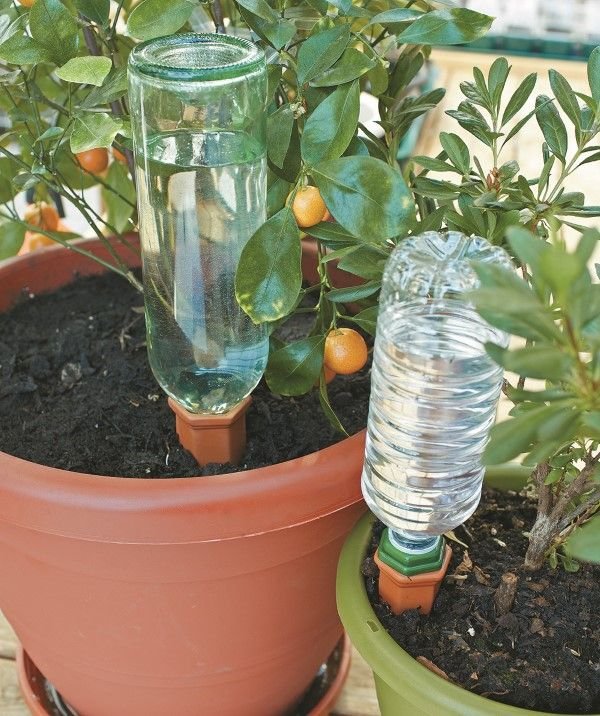
1. Water Conservation:
Drip irrigation reduces water wastage by delivering water directly to the root zone, minimizing evaporation and runoff.
2. Customization:
Easily tailor the system to individual plant needs by adjusting emitter flow rates and placement.
3. Time Efficiency:
Saves time compared to manual watering, and automated systems ensure consistent care, even during your absence.
4. Scalability:
Suitable for small balcony gardens or larger outdoor spaces, making it a scalable solution for various plant setups.
5. Improved Plant Health:
Consistent moisture levels promote healthier plants, reduce stress, and prevent issues like overwatering or underwatering.
6. Eco-Friendly:
Efficient water usage contributes to environmental sustainability.
Troubleshooting and Maintenance in the Drip Irrigation method
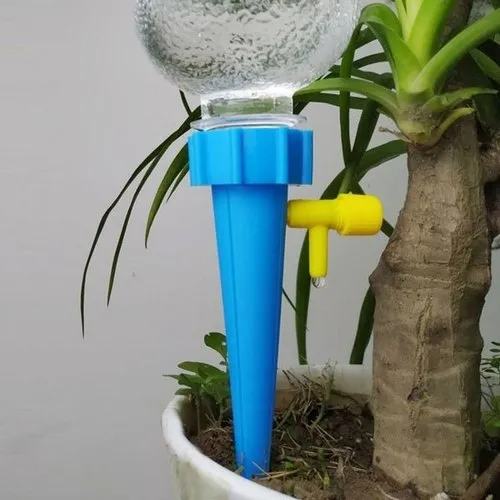
1. Clogging:
Regularly check and clean filters to prevent clogging. Use emitters with built-in anti-clog features for watering plants in a vacation.
2. Leaks:
Inspect connections for leaks and tighten fittings as needed. Replace damaged tubing promptly.
3. Emitter Issues:
Check individual emitters for blockages or irregular flow. Adjust or replace as necessary.
4. Weather Adjustments:
Modify watering schedules based on weather conditions. Many timers have rain sensors to automatically to adjust watering during precipitation.
5. Winter Precautions:
If in a cold climate, drain the system before winter to prevent damage from freezing.
Moreover, drip irrigation is a highly effective and adaptable method for self-watering plants.
So, By understanding its components, setting up the system properly and addressing common issues, you can create a reliable and efficient watering solution for your balcony garden or outdoor space.
And with the added benefit of automation, you can ensure your plants receive optimal care even when you are not around.
So, make drip irrigation and investment for both plant health and convenience for watering plants in a vacation.
